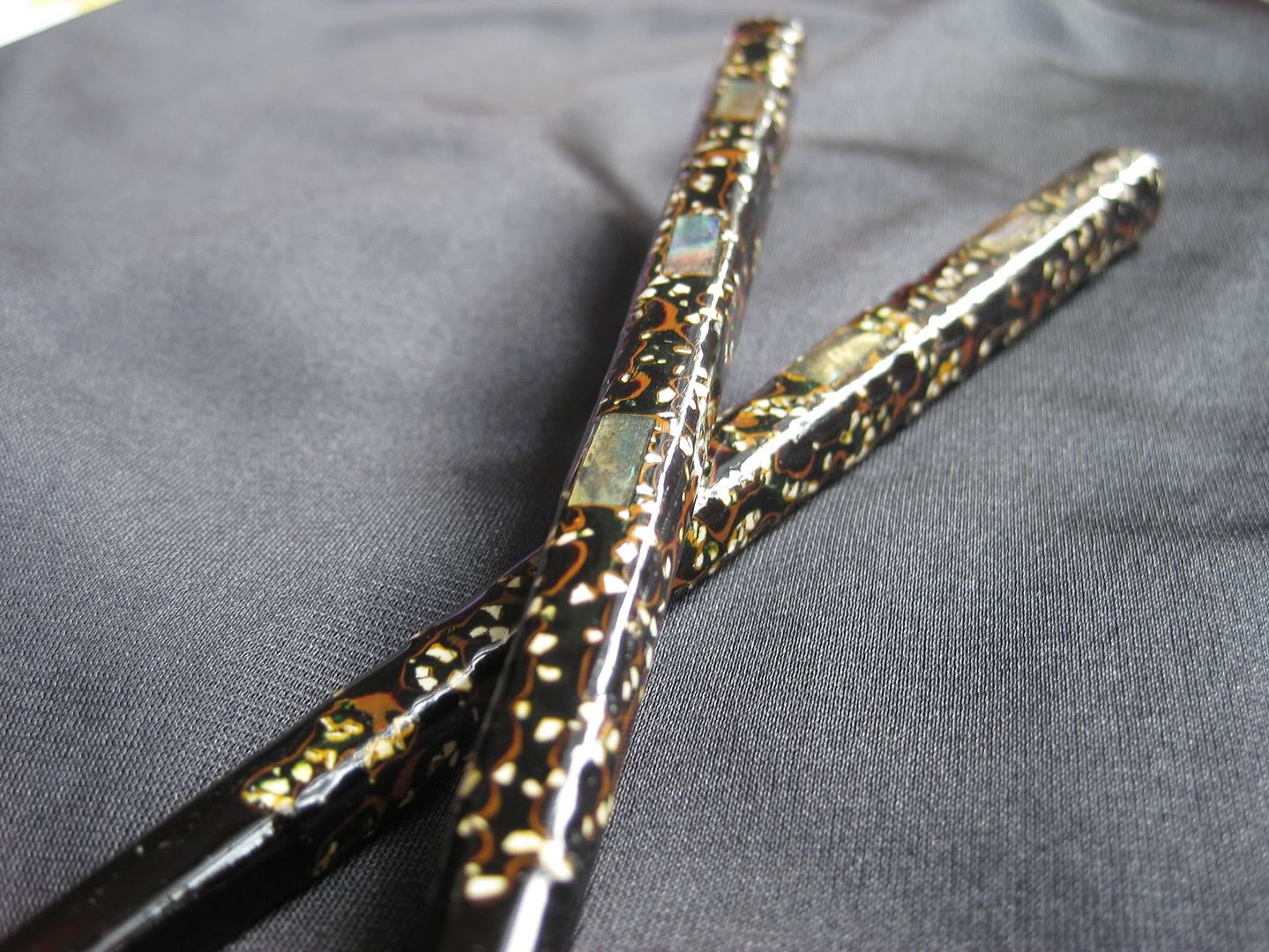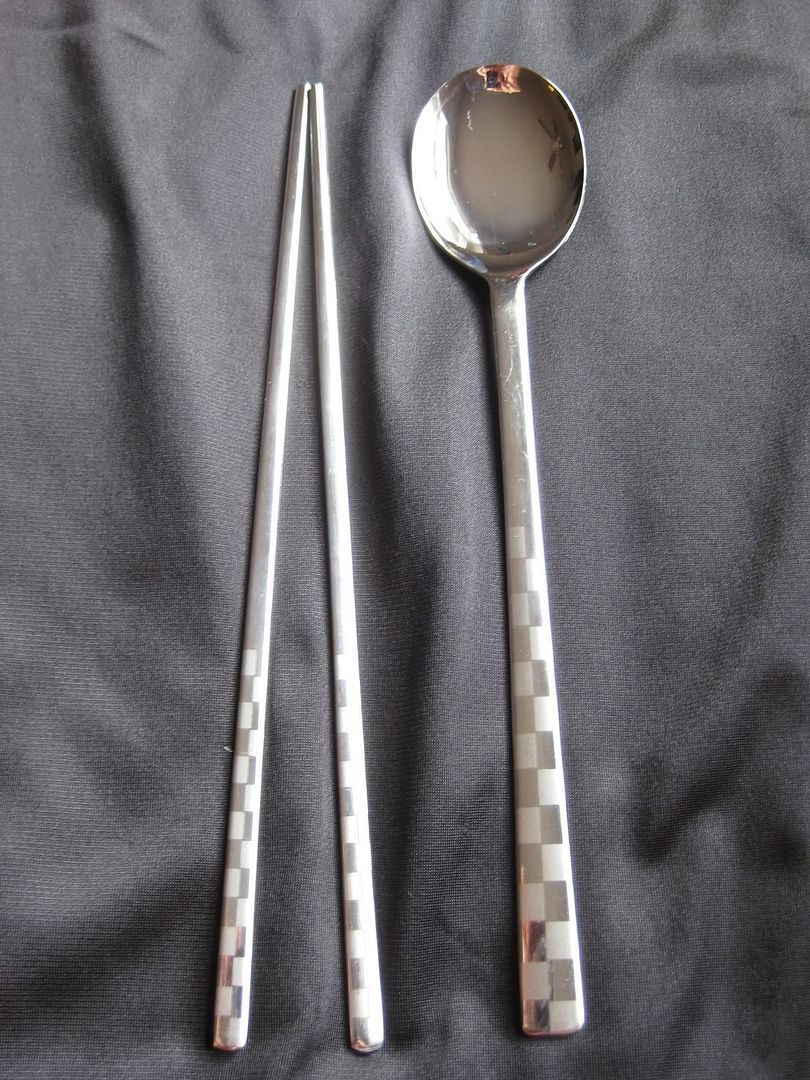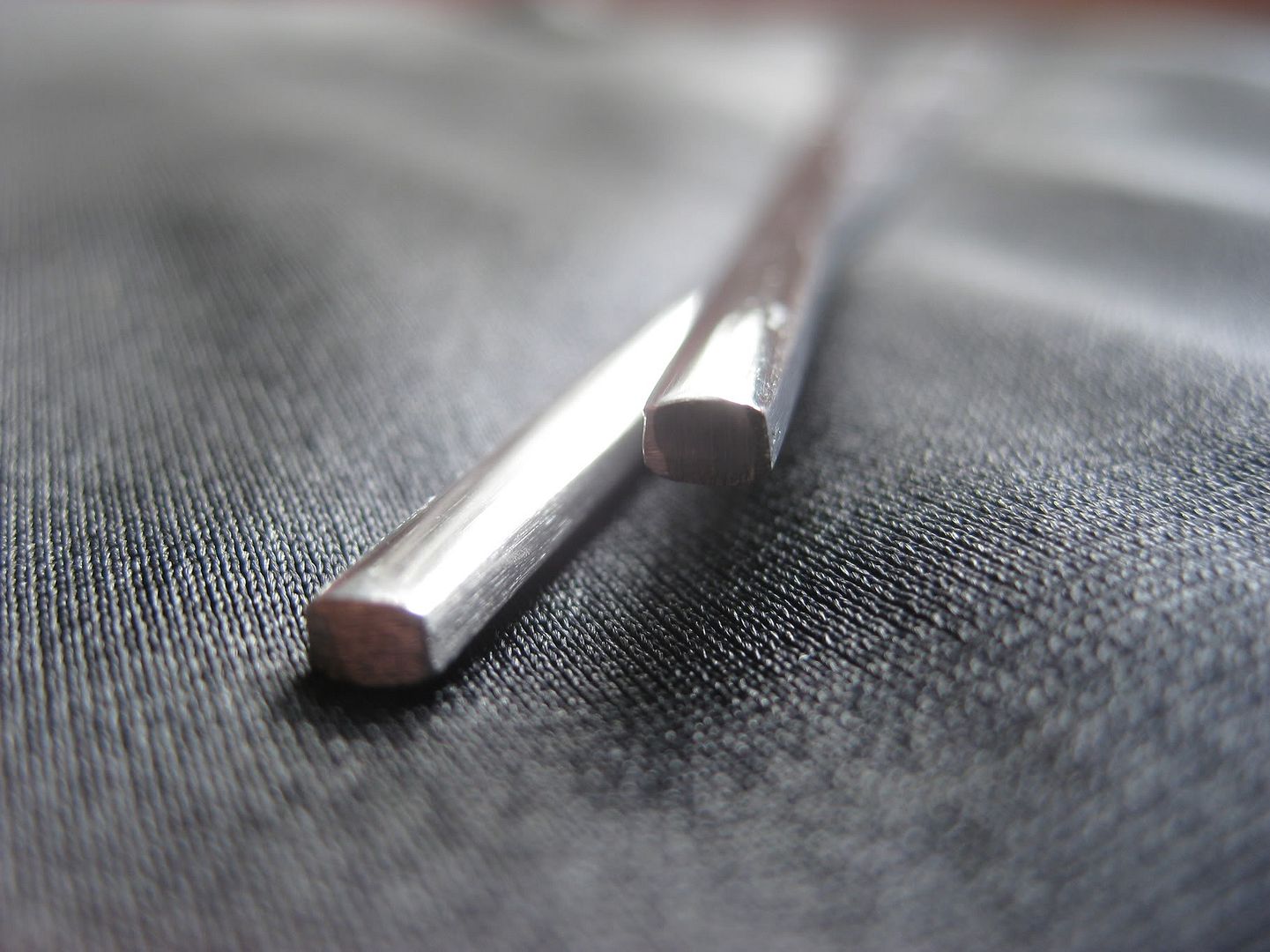Think chopsticks are all basically the same? You might be surprised! Chopsticks come in quite a range of lengths, materials, and etiquette for proper usage. While most that we might come across are made of wood and tend towards the Chinese styling, long and slightly squared in shape, they are also made from plastic, bamboo, bone, metal, ivory, and jade.
I've been using chopsticks for as long as I can remember. My dad frequently went on business trips for his company, sometimes even out of the country. On one of his visits to Japan he brought back several sets of chopsticks for my brothers and me to pick from. I don't tend to get too sentimental over items, but this particular gift from my dad I do treasure. From my research I suspect he may have gotten a 'couple set.' It's common in Japan for women's chopsticks to be shorter in length then men's so they will sell matching sets one pair longer, one pair shorter for couples.
I don't own the shorter pair anymore, unfortunately after many years and multiple moves I've lost track of them, but I've always managed to keep this pair together. They're made of lacquered wood and from what I can tell are inlaid with mother of pearl. For more information about the subject including a breakdown of traditions and other details based on country I found this article very informative- http://en.wikipedia.org/wiki/Chopsticks.
While most countries predominately use wooden or bamboo chopsticks, the majority of Korean chopsticks are made out of metal. I'd noticed this in the different shows I'd watch and frequently wondered how different it would feel trying to use them. Metal tends to be more slippery, the length is shorter than my Japanese set, and on top of all of that they're almost more rectangular, almost flat shaped. So after much searching on eBay for an affordable set, I finally found one. Koreans also usually eat with a large, long handled spoon so the set contained both the spoon and the chopsticks or jeotgarak ( 젓가락).
You can also see the ends are blunt rather than pointy as is typical of Japanese chopsticks. It takes a bit of getting used to holding them because of their thinness and shape they tend to want to flop over, so I have to grip them a bit firmer, but beyond that they seem to function just as well as any of the other styles I've ever used. Although I've stuck mostly to noodles, we'll see how well they do with sticky rice, chicken, kimchi, and other dishes. I look forward to testing them out!



No comments:
Post a Comment